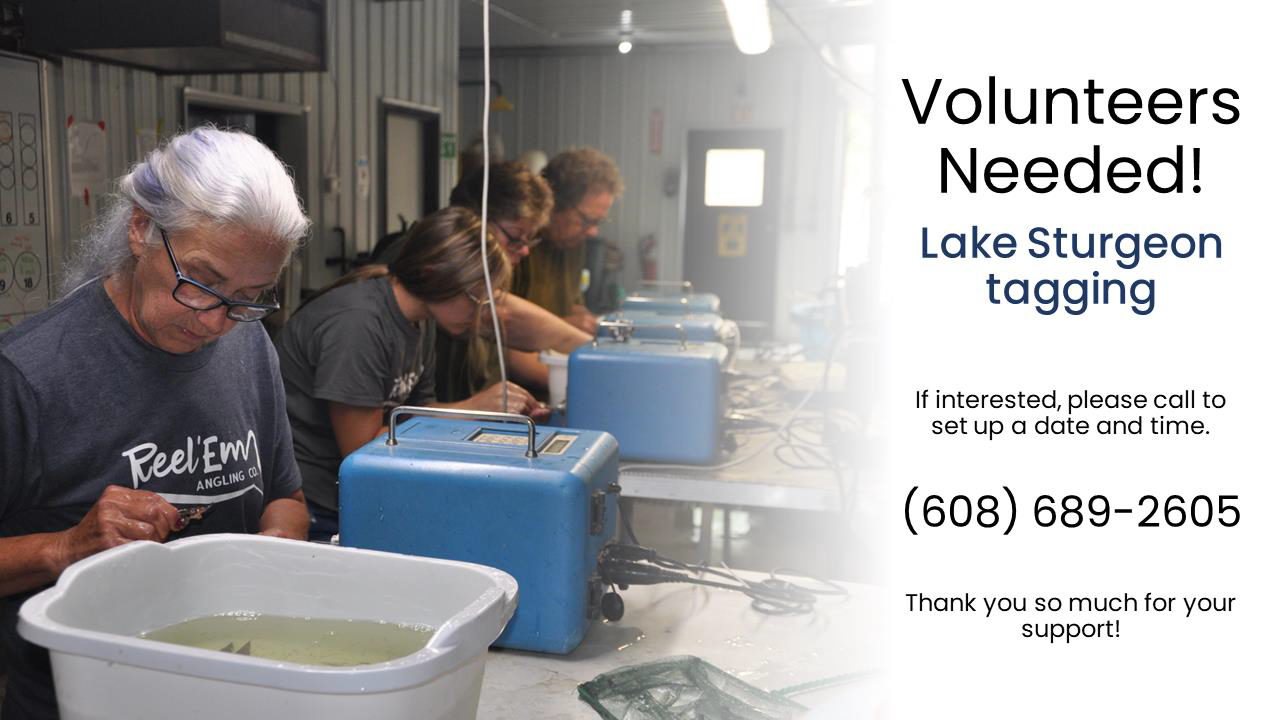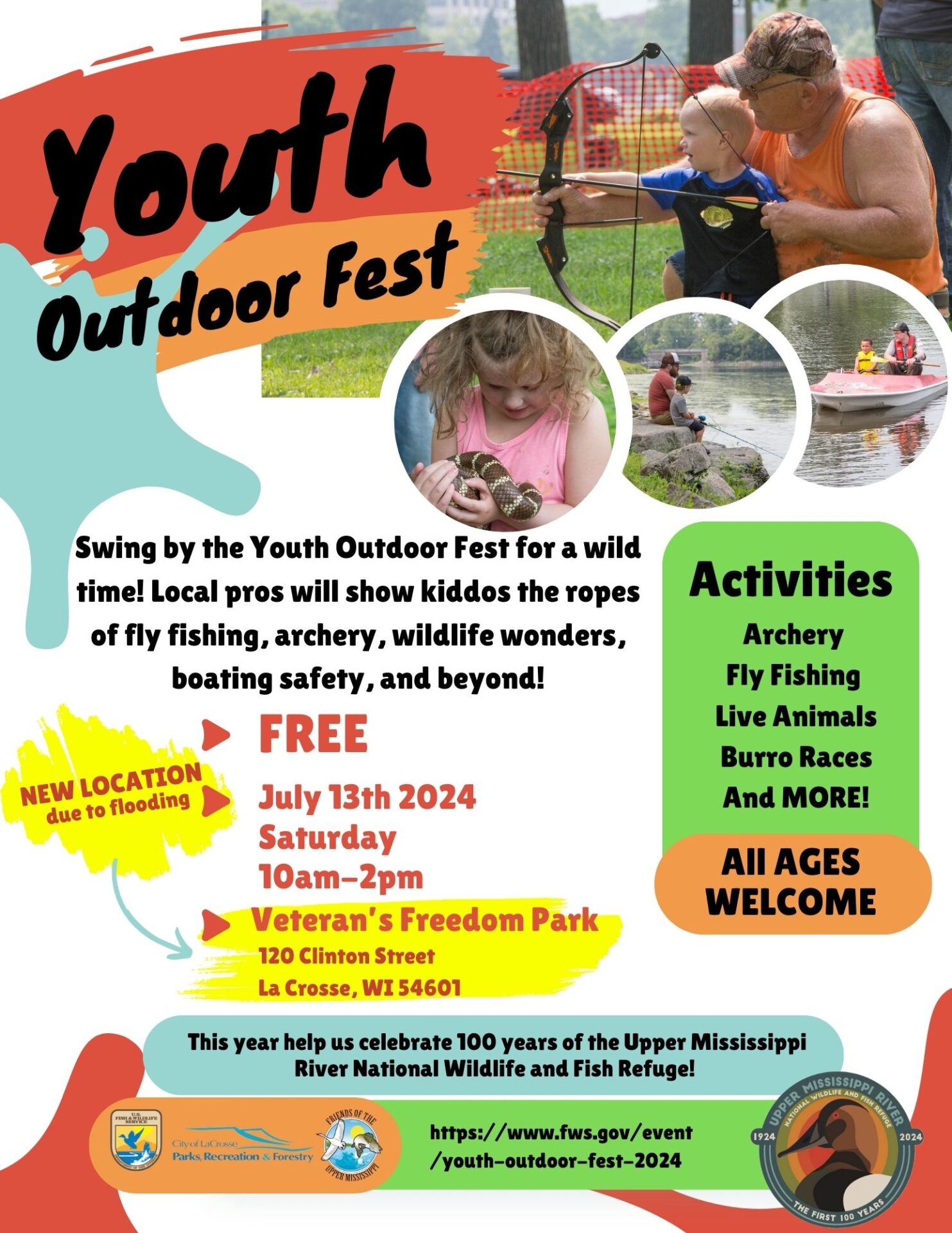Hi friends, starting the week of Aug 19th the hatchery could use some help tagging sturgeon. If you are interested please contact Erica at 608-689-2605 for days and times available. As usual, any help would be greatly appreciated! Thank you in advance. I hope you all have a great weekend, take care, Al.
Smiles, screams of excitement and cheers were all witnessed at our Kids Fishing Day Event that took place on Saturday, May 18th! The event was a great success with 172 kids that participated and over 320 people in attendance. For some this was their very first-time fishing. For everyone it was a day of fun and making memories! There were four learning stations where children were able to gain some newfound knowledge. The stations included rules and regulations by our state and federal wardens, mussel ID by our hatchery staff, fish ID by our hatchery staff and water/boat safety tips provided by the U.S. Army Corps of Engineers. After the learning stations, the children were off to catch up to five fish in the hatchery pond. A huge thank you to the Friends of the Upper Mississippi for sponsoring the event! They also provided a fish cleaning station for families to take home clean trout and arranged a light lunch for all to enjoy! We had over 30 volunteers to help make this event successful! Thank you for the overwhelming support from the Friends of the Upper Mississippi, Roch Kendrick foundation, Friends of Pool 9, the U.S. Fish and Wildlife Service Fisheries and Upper Mississippi River National Wildlife & Fish Refuge and our community. Thank you! By: Erica Rasmussen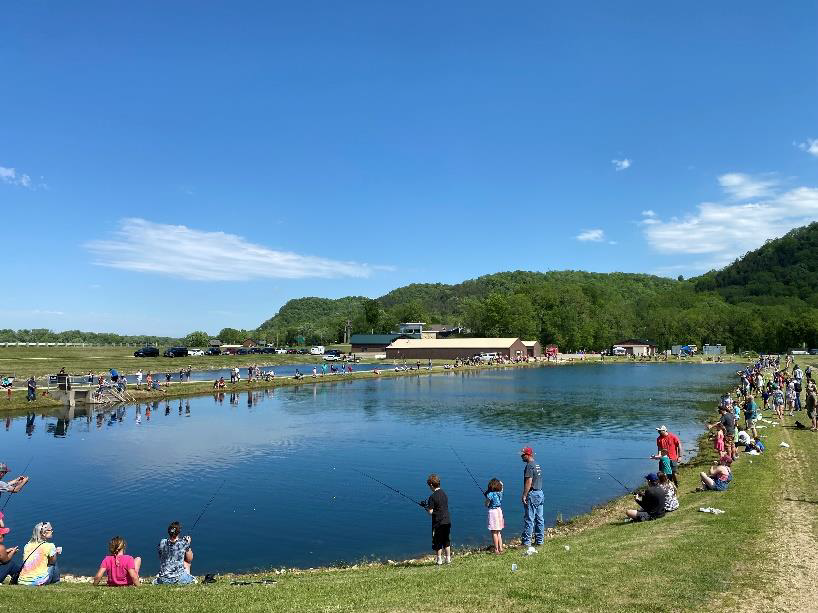
Genoa National Fish Hatchery’s new CPR (Conservation, Propagation, and Restoration) trailer is on the move. Genoa National Fish Hatchery is known for producing tens of thousands of lake sturgeon on an annual basis. The juvenile sturgeon produced at the hatchery every year are the result of multiple spawning events in as many as four states. On average, staff from Genoa NFH log over four thousand miles a year behind the steering wheel to accomplish lake sturgeon spawning and egg collection activities. Often, spawning activities take 6 to 8 hours to complete and then there’s the drive back to the hatchery to place the eggs on the incubation unit until they hatch. Often this drive can take up to 17 hours, in addition to spawning activities. This new trailer will allow Genoa NFH staff to pull over when the number of work and/or driving hours are met and plug the trailer directly into an electrical outlet found at any hotel or rest stop. Photo: Lake sturgeon eggs incubating in the egg jar battery in the new CPR mobile trailer. Credit: USFWS
So, what is it and how does it work? The CPR trailer is an enclosed, self-contained mobile egg jar battery complete with McDonald hatching jars, a recirculating pump, chiller unit to keep eggs cool, and its own Wi-Fi monitored alarm system. The jar battery can hold 18 egg hatchery jars while maintaining a temperature range of 11 C to 18 C. If the temperature range or flow rates deviate from set parameters, the alarm system will call out to hatchery staff. The mobile unit also includes a generator which can power the trailer while staff is driving or when power is not available.
The new CPR trailer is breathing new life into lake sturgeon egg collection and incubation, but its use will likely be expanded to include the many species the hatchery collects eggs from every year. This mobile unit will lead to better egg success and more importantly, safer for the hatchery staff. By: Craig Bockholt
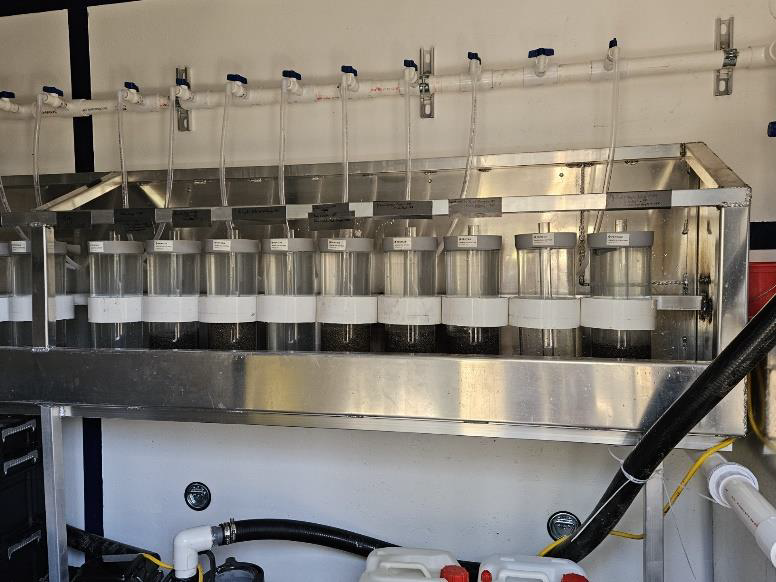
Photo: Lake sturgeon eggs incubating in the egg jar battery in the new CPR mobile trailer. Credit: USFWS
Genoa National Fish Hatchery raises tens of thousands of Lake Sturgeon every year for restoration efforts across the country. We currently raise Lake Sturgeon from the Wolf River, Wisconsin River, Rainy River, St. Clair River, and St. Lawerence River that are stocked in Tennessee, Minnesota, Ohio, and New York. This year we are excited to announce we have added the Sturgeon River to our resume. With the help of federal, state, and tribal partners adult Lake Sturgeon collection occurred near the Prickett Dam.
The eggs were collected and fertilized and then transported to the Genoa National Fish Hatchery. These fish will be raised at Genoa for approximately 4 months where they will grow to 7-8in. They will then be tagged and brought to Missouri where half will be released in the upper Missouri River and half will be released in the lower Missouri River. We are very excited to add another strain to our Lake Sturgeon restoration effort and look forward to continued restoration of the Lake Sturgeon. By: Jadon Motquin
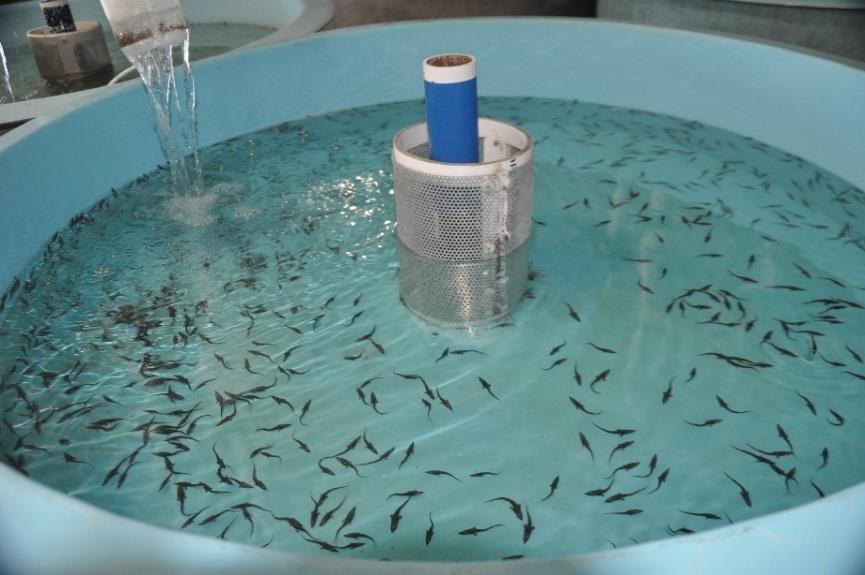
Hundreds of 2-3-inch Lake Sturgeon in a tank. Photo: Erica Rasmussen/USFWS

Friends of the Upper Mississippi along with CARP(Boathouse Owners) US Fish & Wild Life Service and the US Army Corp of Engineers are asking for your help in cleaning up the Mississippi River in Pool 8.
Saturday June 1st 2024
8:00am – 12:00 pm
Wild Cat Landing
Brownsville, MN.
Please wear old clothes, a long sleeve shirt, work gloves, boots/chest waders (if available) life jacket, sunscreen and bug spray. Boats needed desperately. Also a battery operated Saw Zall is a big help. Donuts are provided along with bottled water and all the trash bags you will need. Any Questions please call (608) 780-2710
Friends, just a reminder of our annual river clean up this Saturday June 1st at Wild Cat landing from 8:00 A.M. til 12:00. If anyone would like to bring their boat it would be greatly appreciated. Hope to see you all there! Have a great Memorial day! Take care, Al.
Big Stone Lake, located on the South Dakota – Minnesota border was once home to abundant numbers of lake sturgeon. Many factors including over harvest and poor water quality led to an extirpated population of lake sturgeon by 1946. Currently South Dakota Game, Fish and Parks, Minnesota Department of Natural Resources and USFWS are partnering to restore historic populations. In 2014, Genoa National Fish Hatchery joined the restoration efforts by supplying fingerling lake sturgeon at approximately 8 inches of length for stocking in the fall. The fish are offspring of adult lake sturgeon from the Wisconsin River, collected by the Wisconsin Department of Natural Resources. The restoration plan calls for the stocking of up to 4,000 fish per year for 20 years. This year 4,005 sturgeon were stocked and to date a total of 41,518 lake sturgeon have been stocked into Big Stone Lake. Annual surveys by the Minnesota Department of Natural Resources had captures of lake sturgeon in year 2023 exceeding 50 inches in length. It’s safe to say these fish are growing and thriving. With continued cooperation between agencies the goal of restoring a historic population of lake sturgeon to Big Stone Lake is becoming a reality. By: Orey Eckes
Lake Sturgeon being tagged, measured and released back into Big Stone Lake by MN DNR. Photo Credit: MN DNR
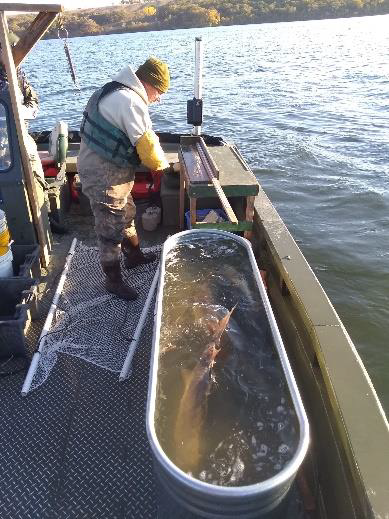
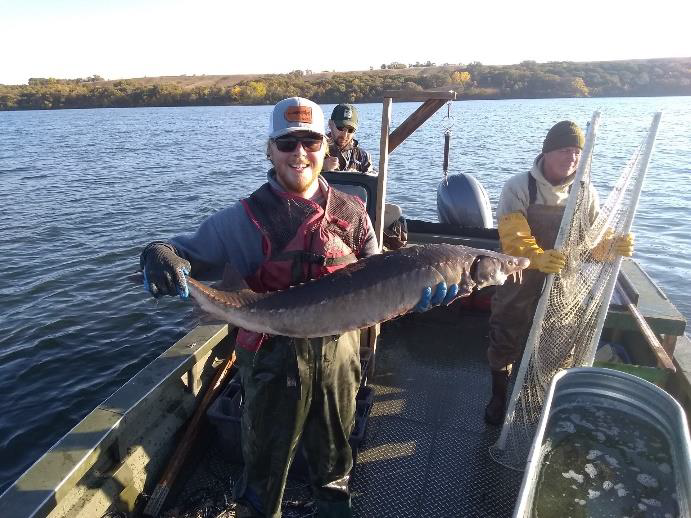
Last summer, we were fortunate to get funding to replace the kettles in ponds 12 and 13. The kettle is the concrete structure at the low point of the pond. As a pond drains, the fish gather in the kettle where they can be netted out. The previous kettles were at the end of their life and had become a safety issue due to the crumbling concrete. I found that out the hard way one day when I went for an unexpected swim. Contractors got to work last summer removing the old kettles and installing the new ones. Former hatchery manager, Doug Aloisi helped design a new style that is much different than the ones we currently use. The new design creates an area of low current velocity for the fish to rest in prior to harvest. Our current kettles lack that “quiet” water, meaning fish must swim against the current coming through the kettle or risk being pinned against the screen. Another benefit of the new design is the increased screen surface area. This will lower current velocities going through the screen and reduce chances of algae and vegetation plugging the screen. Finally, the kettles have a dual drain design that will help us draw down the pond to the perfect level. We can open the first drain and sleep easy at night knowing the pond will be ready for harvest in the morning without constant monitoring or return trips to the hatchery in the evening to shut pond drains. Pond 12 work was completed this spring and will get its first test with a crop of yellow perch. We’re excited to see how these new kettles work and hopefully they help us produce more and healthier fish for years to come! By: Nick Bloomfield
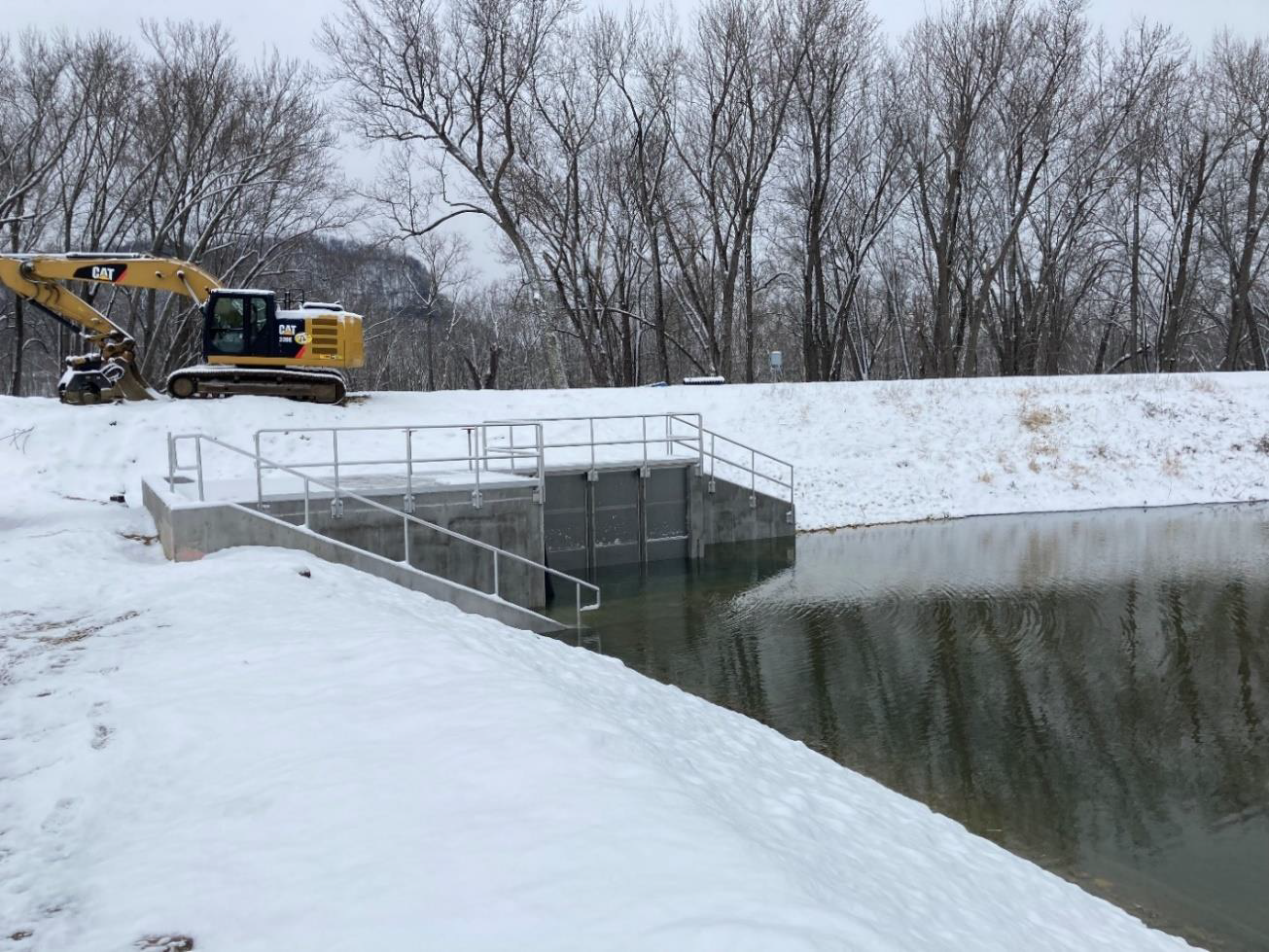
Concrete kettle in a hatchery filled pond with an excavator on the road. Photo: Nick Bloomfield/USFWS.

